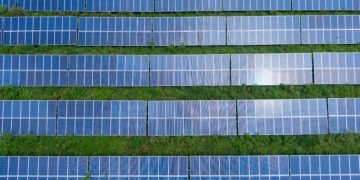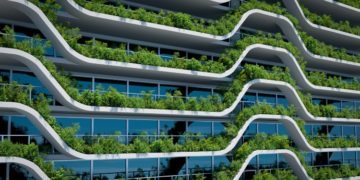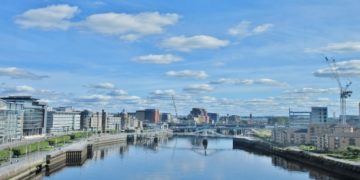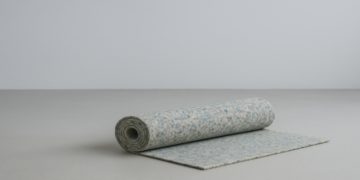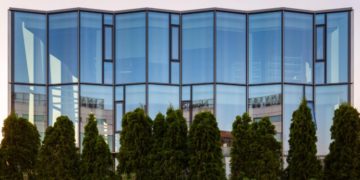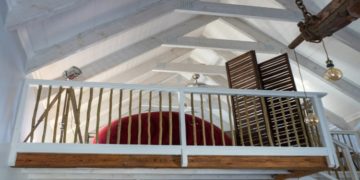Today’s office environments are evolving beyond basic functionality. There’s a growing emphasis on creating spaces that support mental wellbeing, physical comfort, and productivity. One of the most effective ways to achieve this is by introducing natural light and plant life into workspaces. Businesses across the UK, and especially in urban hubs like Manchester, are shifting towards designs that encourage a closer connection to nature. These changes not only elevate the visual appeal of the office but also bring practical benefits that enhance day-to-day working life.
Why Natural Light and Greenery Matter in the Modern Workplace
Workspaces bathed in natural light offer more than just aesthetic advantages. Sunlight exposure helps synchronise circadian rhythms, keeping energy levels steady and improving concentration. This is especially valuable in high-demand environments where alertness and sustained focus are essential.
Greenery, meanwhile, plays a quiet but essential role in creating calming surroundings. Biophilic design, the principle of integrating nature into built environments, has gained considerable traction in recent years. Incorporating plants into office settings helps reduce stress, supports mental clarity, and enhances air quality. These additions are both low-tech and high-impact, making them a practical investment for any organisation.
One strong example of this design philosophy in action is the office fit out for HGF Manchester. The project demonstrates how large windows, and thoughtfully placed greenery can support both physical and mental wellbeing, helping employees feel more at ease and more productive.
Biophilic Elements That Redefine Workspace Design
Effective biophilic office design relies on a combination of natural features. Light-filled spaces are prioritised with large windows, skylights or reflective surfaces that carry sunlight into deeper parts of the office. This reduces reliance on artificial lighting and creates a more inviting atmosphere.
Green elements, from potted plants to living walls, are strategically introduced to bring visual softness and organic texture into the environment. Vertical gardens are particularly useful in areas with limited floor space, providing greenery without obstructing foot traffic. Some of these installations even feature built-in irrigation systems for ease of maintenance.
In open-plan offices, large indoor plants serve as natural dividers. They help create subtle boundaries between collaborative and quiet zones while maintaining visual openness. Alongside greenery, the use of natural materials adds warmth and character. Timber panels, cork surfaces, and natural stone elements lend a tactile richness that fosters a sense of comfort. Small features like fountains or indoor water fixtures can also improve sound quality, helping to muffle background noise and enhance focus.
Functional Benefits of Office Plant Life
Plants do far more than improve the appearance of a workplace. They act as natural air filters, removing pollutants such as carbon dioxide and certain chemicals often found in office interiors. This helps maintain a cleaner and healthier environment for staff.
Another benefit is moisture regulation. Through transpiration, plants release water vapour into the air, which can be particularly useful in buildings with dry heating systems. Balanced humidity levels reduce the likelihood of dry skin and respiratory discomfort.
Sound absorption is a lesser-known advantage of plant life. Broad-leafed species placed in strategic locations, such as near walkways, between desks, or by communal zones, can reduce noise, helping teams stay focused. This acoustic benefit is subtle but effective, especially in high-traffic or open-plan environments.
Bringing Nature Indoors: The Manchester Approach
Manchester’s business sector continues to embrace biophilic design, using it to revitalise both new builds and older properties. In many offices, extensive glazing and open floor plans are used to maximise the reach of natural light. Even in heritage sites with structural limitations, clever techniques such as internal light wells, glass partitions, and reflective surfaces ensure that daylight is not lost.
As Manchester’s weather isn’t always predictable, supplementary lighting plays a key role. Adjustable LED systems that mimic daylight patterns provide a steady rhythm of illumination throughout the day. These systems are especially helpful during the darker winter months, maintaining consistent brightness and supporting staff energy levels.
Long-Term Value and Measurable Outcomes
Incorporating natural elements into the office isn’t a superficial investment. Over time, businesses experience tangible returns. Employees report improved comfort and motivation, while organisations see better attendance and higher productivity. While each workspace is different, tracking key metrics before and after implementing biophilic features helps reveal their impact.
Natural lighting, in particular, contributes to reduced energy usage. Daylight can cut electricity costs by reducing the need for overhead lighting. In summer, plants placed near windows provide gentle shade, lowering internal temperatures and reducing the demand on air conditioning systems.
Preparing Offices for the Future with Biophilic Design
Flexible workspaces are increasingly important as work patterns shift between remote, hybrid, and in-office arrangements. Natural design features provide this flexibility. Movable planters, retractable green partitions, and multi-functional quiet zones adapt easily to new layouts or team structures without the need for costly reworks.
Biophilic design also aligns with sustainability values. As more professionals choose to work with companies that reflect their ethics, providing a green office space can strengthen recruitment and retention. It signals a genuine commitment to wellbeing, sustainability, and thoughtful design.
Ongoing care remains important. Regular checks on plant health, light levels, and employee use of biophilic zones ensure that these features continue to deliver value. Staff feedback can guide improvements, revealing how people interact with and benefit from the natural elements in their work environment.
Investing in a More Human-Centred Workplace
Natural light and plant life are no longer optional extras in workplace design. They are central to creating healthy, productive, and engaging environments where people thrive. Biophilic design offers a practical, adaptable, and aesthetically pleasing solution for organisations aiming to future-proof their operations. By connecting people with nature through considered design, businesses enhance their spaces, and improve the everyday experience of work.
































